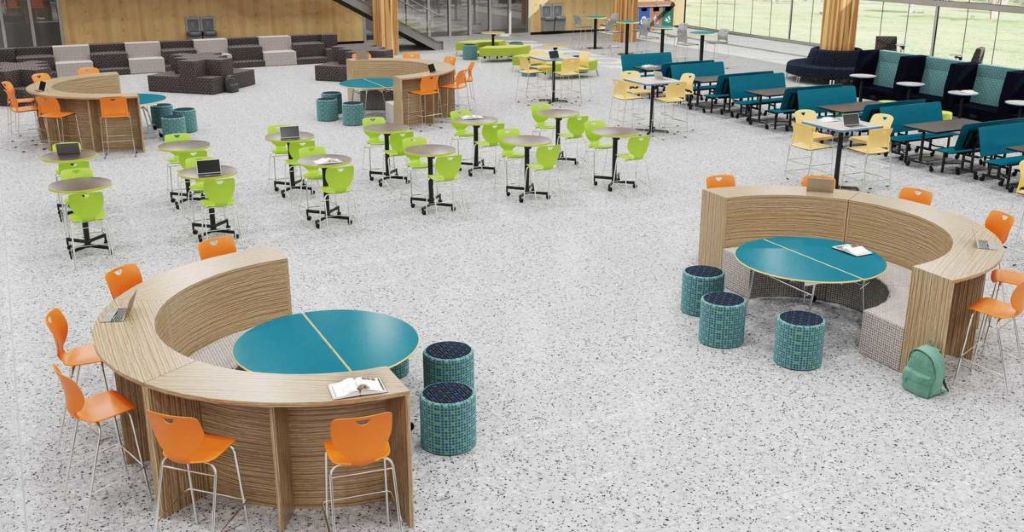For students with disabilities, the traditional classroom setting can sometimes present challenges that hinder engagement and academic progress. Collaborative learning spaces (CLS) offer an innovative approach, transforming classrooms into dynamic environments that foster inclusion, communication, and a love for learning. This article delves into the concept of CLS for special education, exploring its benefits, design considerations, and practical implementation strategies.
What are Collaborative Learning Spaces?
Imagine a classroom that seamlessly blends individual work areas with designated zones for group projects, presentations, and peer interaction. This is the essence of a collaborative learning space. These classrooms move away from rows of desks facing the teacher, promoting a more interactive and student-centered approach.
Benefits for Special Education
Here’s how CLS can specifically benefit students with disabilities:
- Enhanced Engagement: Students with diverse learning styles can find a learning method that suits them. Group discussions and activities provide opportunities for peer interaction, boosting motivation and participation.
- Social and Communication Skills Development: Collaborative activities necessitate communication, negotiation, and teamwork. CLS offers a safe space for students to practice these crucial skills, leading to better social interaction and self-confidence.
- Peer Learning: Students with disabilities can benefit from learning alongside peers without disabilities. Observing different learning approaches and receiving peer support can foster understanding and academic growth.
- Differentiation and Individualization: CLS allows for a more flexible learning environment. Teachers can cater to individual needs, offering differentiated instruction within collaborative activities, ensuring all students can participate meaningfully.
- Development of Executive Functioning Skills: CLS promotes organization, planning, and problem-solving skills needed for successful collaboration. Students learn to manage their time, share resources, and work towards a common goal.
- Positive Learning Environment: The interactive nature and focus on student agency create a more positive and inclusive learning environment for students with disabilities.
Design Considerations for Effective CLS
Creating an effective CLS requires thoughtful planning that caters to diverse learning needs. Here are some key considerations:
- Physical Space: Moveable furniture allows for flexible configurations to accommodate different group sizes and learning activities. Consider incorporating designated quiet areas for individual work or focused learning.
- Sensory Considerations: Lighting, temperature, and noise levels can impact students with sensory processing difficulties. Incorporate dimmers, soft lighting, noise-dampening materials, and fidget toys to promote focus and comfort.
- Assistive Technologies: Provide various assistive technologies like text-to-speech software, screen readers, and ergonomic equipment to cater to individual learning styles and physical needs.
- Visual Supports: Visual schedules, clear instructions, and graphic organizers can aid learners with processing challenges or those who benefit from visual cues.
Implementing Collaborative Learning Activities
The success of a CLS hinges on engaging in collaborative activities. Here are some strategies to get you started:
- Jigsaw Activities: Divide students into expert groups and have them research specific topics. Later, reformed groups allow students to share their expertise, promoting peer learning and information retention.
- Think-Pair-Share: Students individually brainstorm ideas, then pair up to discuss and refine their thoughts before sharing with the whole class. This promotes individual reflection and peer collaboration.
- Station Activities: Set up stations with differentiated learning materials focused on the same topic. Students rotate among stations, working collaboratively but engaging with content that suits their learning styles.
- Role-Playing Activities: Create scenarios that require students to work together in simulated situations. This allows students to practice communication, problem-solving, and teamwork skills in a safe environment.
Collaborative learning spaces offer a promising approach to enhancing the learning experience for students with disabilities. By fostering a more interactive, inclusive, and student-centered environment, CLS empowers students to develop essential skills for academic success and social well-being. For educators seeking to create engaging and effective learning environments, adopting the principles of CLS can be a valuable step toward achieving these goals.
10 Effective Study Techniques to Try This Year: Boost Your Learning Power!
Additional Considerations:
- Teacher Training: Teachers require training in collaborative learning strategies and differentiated instruction to effectively utilize CLS for students with special needs.
- Parental Involvement: Communicating with parents about the benefits of CLS and involving them in the learning process can create a strong support system for students.
- Continuous Improvement: Regularly assess the effectiveness of the CLS and adapt strategies based on student needs and feedback.
By actively implementing collaborative learning spaces and fostering a culture of collaboration, educators can create a learning environment where every student with a disability thrives.







